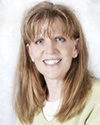“Change is happening out there!” Mike Hutjens exclaimed as he enthusiastically began his presentation on the opportunities and solutions for dairy producers in 2017 and beyond at the recent Great Lakes Regional Dairy Conference held in Frankenmuth, Michigan.
With the milk protein price at $2.82 per pound and the milkfat price at $2.20 per pound, Hutjens said, “Finally, protein is higher than fat.” He continued, “Because protein is apparently what consumers really want now, it’s important to adjust to change because we never know what’s going happen.”
As those prices have changed, Hutjens outlined what was happening with feed costs and international markets:
- Feed cost is 10 to 12 cents per pound of dry matter
- Close-up heifers are worth $1,650
- Cull cows are at 55 cents per pound
- Bull calves are worth $150
Internationally, with the strong U.S. dollar, China is out of the market and there is reduced milk production in the European Union and New Zealand.
Knowing that dairy producers need to be ready for change, Hutjens shared his four feeding “pillars” for 2017.
1. Pillar number one: Never give up milk. Ration dry matter is worth 10 to 12 cents per pound, and 1 pound of dry matter should support 2 to 2.5 pounds more milk. If milk is 17 cents per pound, then 10 cents of dry matter will yield 24 cents more income. Making sure the cows are eating the feed is crucial to get this marginal dry matter to pay off.
2. Pillar number two: Build your milk check. Three premiums that dairy producers can control are milk quality premiums, milk components and a premium for not using rBST. “This is money lying on the table. This is yours; Trump or Obama can’t stop you from getting it – this is yours that you control,” Hutjens said. He emphasized that dairymen need to consider how many pounds of fat and protein they are getting in their milk. The higher the components, the higher the premium.
3. The third pillar: If it was economical at $26 milk, then it’s economical at $16 milk. The role of feed additives can be an important part of the cow ration. In the past 10 years, probiotics, mycotoxin binders and anionic products have increased sharply. “Direct-fed microbes in calf starters and whole milk feeding programs is a slam dunk,” Hutjens remarked. He explained that on the farms that he advises, they have “fewer sick calves and faster starter intake.”
Hutjens said that on the farms he consults, the six additives he uses for lactating cows are rumen buffers, yeast products, monensin, silage inoculants, biotin and organic trace minerals. Additives for dry cow rations will see this same list plus chromium. And the fresh cow ration will have supplemental calcium and rumen-protected choline in addition to the same additives for the lactating cows.
4. The fourth and final pillar: It’s a dairy business. Hutjens said while it’s fun to have 4-H show calves and show cows, if you are running a dairy business, you should know these five feeding metrics:
- Feed costs per day
- Feed costs per 100 pounds or hundredweight (and how this reflects milk yield, shrink and feed costs)
- Feed costs per pound of dry matter (and how this reflects feed ingredient selection)
- Income-over-feed costs, as this will reflect the profit margin
- Feed efficiency, which evaluates feed conversion to milk yield
As Hutjens wrapped up his presentation, he asked, “Do you have the right cows on the bus?” He challenged dairy producers to consider using genetics and genomics as a tool, try to get more longevity out of their cows, keep lameness to a minimum as it’s a silent thief, keep heat stress on dry cows to a minimum and introduce an accelerated calf rearing program.
Hutjens shared a story about Wayne Gretzky and his key to success as a hockey player. He said, “Gretzky said he skates to where the puck is going to be, instead of where the puck is now.” Hutjens urged dairymen to put on their Wayne Gretzky hat and start breeding for pounds of protein, use polled genetics and breed for A2 milk. He also encouraged them to watch for opportunities and to spend time considering where they want their farm to be in three years, 10 years and 20 years. ![]()
Melissa Hart is a freelance writer from North Adams, Michigan.
PHOTO: Illustration by Corey Lewis.






